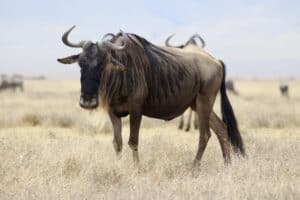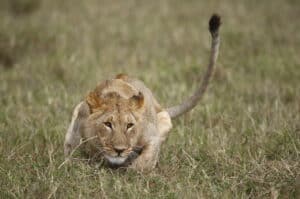Continue reading for our analysis...
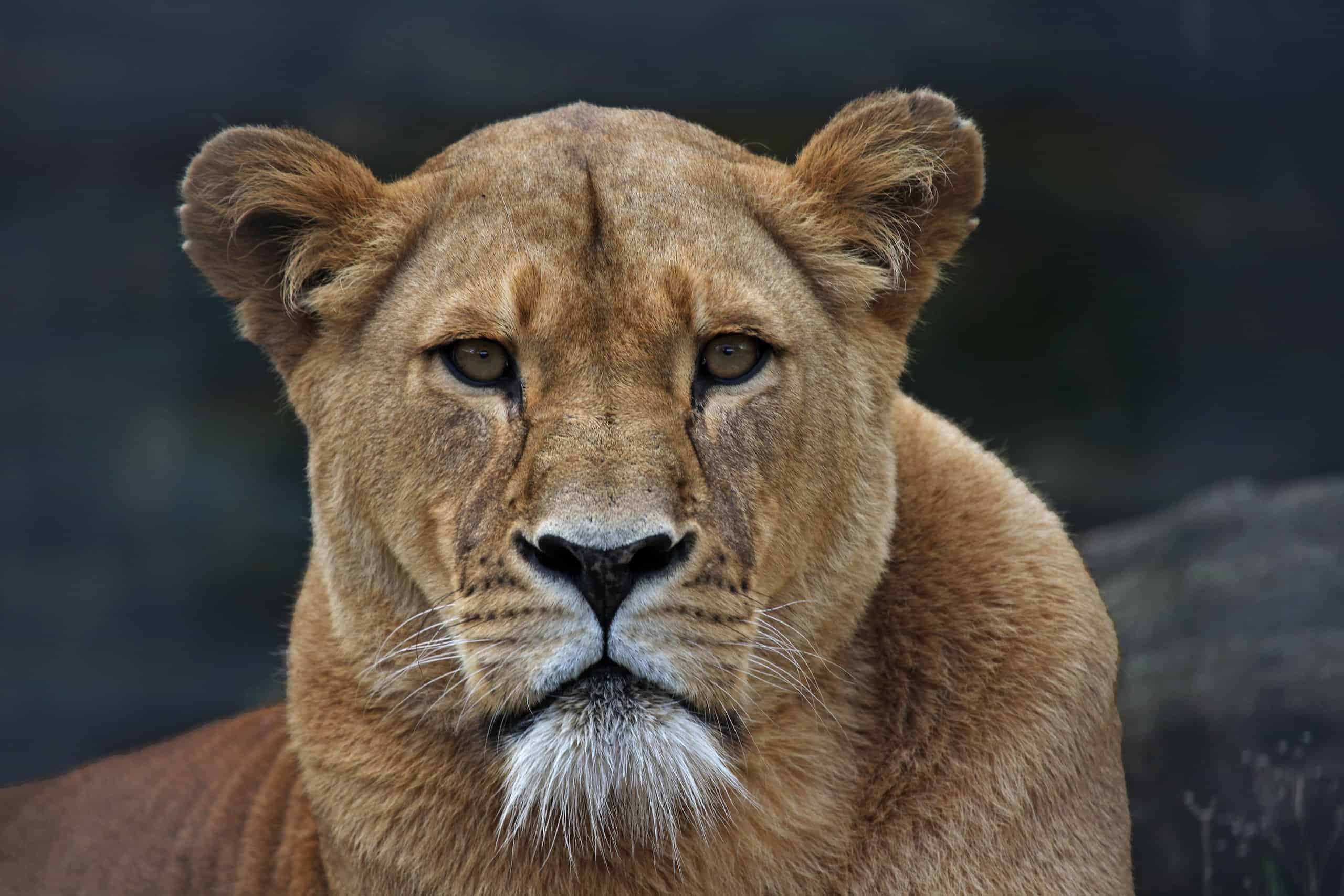
Going to a zoo is a great way for humans to witness nature up close. Often, it’s a reminder of how beautiful animals are and just how lucky we are to see them from a safe distance.
As happens, however, we can easily become accustomed to seeing even the world’s deadliest animals up close, knowing we are safe behind glass.
When we forget that the animals we think are “cute” are actually apex predators, we can get ourselves into trouble. As the video shows, when an apex predator decides you are lunch, it’s only another predator that can save you!
What Are the Social Dynamics of Lions?
Lions stand out among cats due to their strong social structure, living in prides comprised of 5-15 related females with their cubs, usually led by a single male (though small groups of 2 or 3 are not uncommon). Male lions defend their territory by marking trees and rocks with urine and roaring to ward off intruders.
Despite being formidable defenders of their pride, male lions constantly face threats from other males attempting to take over their territory. Successful intruders will kill any cubs sired by the previous male. Surprisingly, despite their size, male lions contribute little to hunting, as they are slower and more visible than their female counterparts.
What Exactly Happens in This Dramatic Video?
In the below clip, we get to see something that reminds us all that lions are cute, but they are not tame. The video starts rather suddenly, but we can assume a bit of what is happening beforehand.
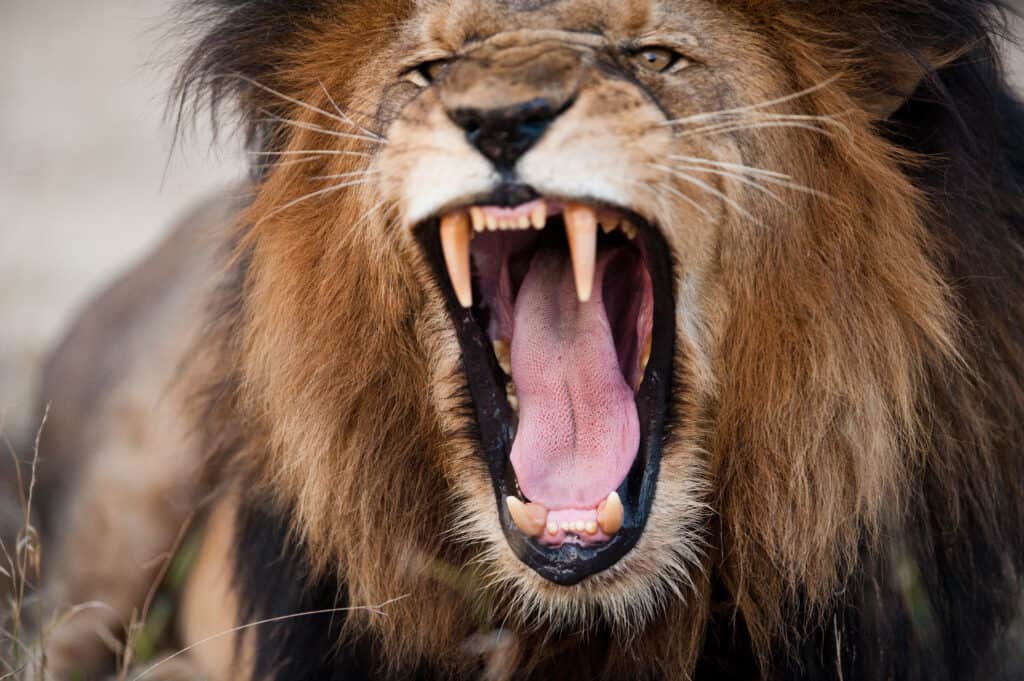
In a split second, the male lion runs over and begins attacking the zookeeper on the right side of the pen.
©e2dan/Shutterstock.com
Two zookeepers are in a lion’s pen, either doing a show or a feeding of some type. We know that whatever it is, it’s a public event because there is a crowd of people watching what is going on.
There are two lions and two zookeepers in the frame, and things go south fast. The large male lion decides that it truly is time to bite that hand that feeds him! In a split second, the male lion runs over and begins attacking the zookeeper on the right side of the pen. Amid gasps and cries from the crowd, they realize that this definitely isn’t part of the show.
Grabbing the zookeeper’s leg and easily pulling him down, the lion shows just how powerful it is compared to puny humans! As the zookeeper goes down, the situation begins to feel a bit hopeless. Even the world’s strongest man pales in comparison to the average lion.
Despite the other zookeeper pulling and tugging on the male lion to let his partner go, the lion seems to be intent on attacking him.
Then, from the left screen, something amazing happens. The other lion that was performing with the group at the time, a female, runs and tries to help. Jumping on the back of the male lion, the lioness is much more convincing than the man trying to help!
With the distraction, the man is able to get up and run to the side. Still, in some sort of frenzy, the male lion chases after him. This time, however, the female lion intervenes more directly.
Cutting the male lion off, she directs him to the side like a friend stopping another friend from getting into a fight. Whatever the reason the male had for attacking, the female knows that it’s in everyone’s best interest to stop it.
Watching the video, it’s easy to see that the only thing that can stop an angry male lion is a calm and collected female lion! Maybe lions aren’t all that different from humans anyways, eh?
Is It Normal For Captive Lions To Be Aggressive?
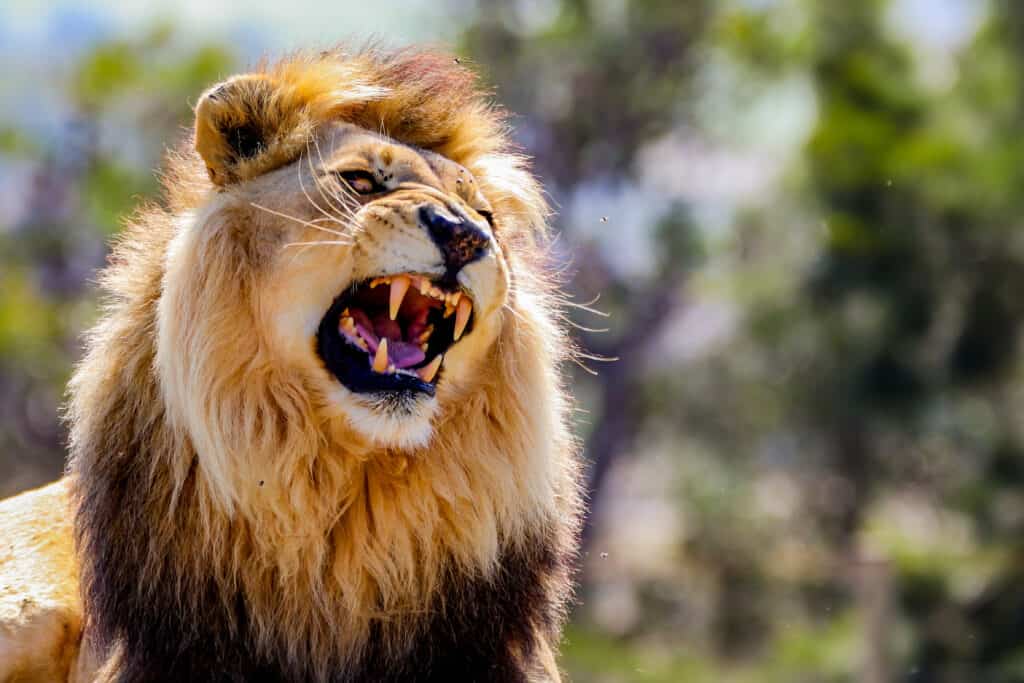
Lions are not naturally aggressive toward humans, but zoo attacks happen more often than wild attacks.
©SteffenTravel/Shutterstock.com
Lions are not naturally aggressive toward humans in nature. Attacks can happen, but unless provoked, protecting their young, or food is scarce most lions won’t bother attacking a human. Although non-aggressive, lions will avoid conflict with humans if at all possible. While lions in the wild tend to be less aggressive, attacks have been reported in zoos across the world where human interaction is common.
Aside from roaring, lions will communicate by scent-marking their environment. Other signs of agitation can be their facial expressions and body postures similar to a house cat. Lions usually show their anger by showing their teeth, retracting their ears, as well as tail twitching.
How Many Lions Are Left In The World?
While there likely used to be hundreds of thousands of lions roaming the world hundreds of years ago, today, only around 20,000 lions remain. The biggest drivers in the dramatic reduction in the worldwide lion population are loss of habitat, illegal wildlife trade, and disease. These various factors have led lions to be classified as a “vulnerable” species according to the list IUCN’s Red List of Threatened Species.
Because of this critical classification, many conservation groups are taking steps aimed at preserving lions and keeping them from becoming further endangered, or worse, extinct. For example, according to African Parks, even though lion populations have fallen dramatically over there past 20 years across many parts of Africa, populations are actually on the rise in countries where parks are well funded and properly managed – such as in Botswana, Namibia, South Africa, and Zimbabwe.
Lions: Size in Captivity Versus in the Wild
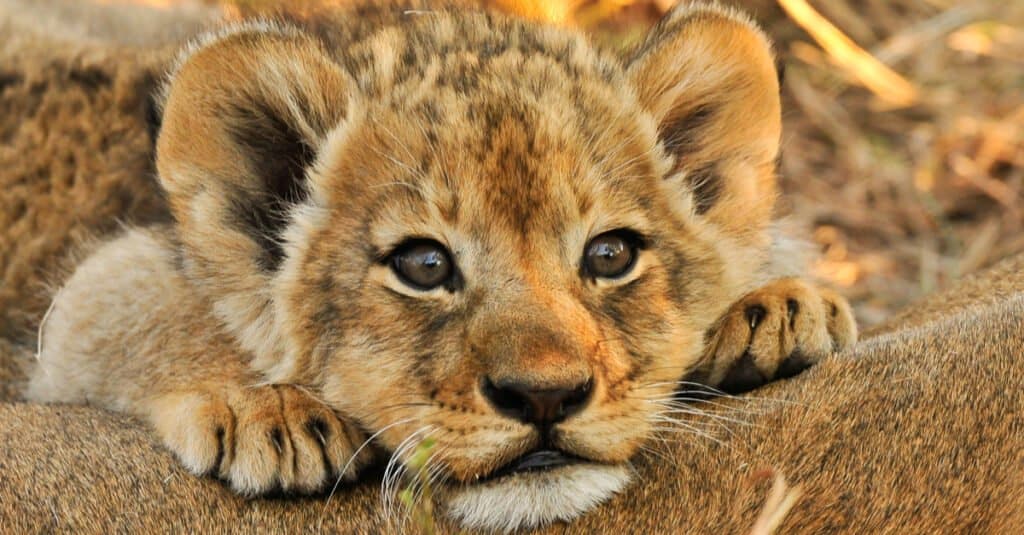
This cute lion cub starts out weighing three pounds and can grow to over 500 pounds.
©Keith Jenkinson/Shutterstock.com
Lions are an iconic symbol of strength and power, and their size reflects this. In captivity, the average lion can reach up to 550 pounds and stand up to 9 feet tall. This is slightly larger than the average lion in the wild, which typically weighs between 330 to 550 pounds and stands at 8 to 9 feet tall.
In addition to size differences between lions in captivity and those in the wild, there are also variations in size due to age. For example, cubs typically weigh between 3 to 4 pounds when they are born and can grow up to 20 to 30 pounds by the time they are three months old. By the time they reach 14 months, they can weigh up to 120 pounds. After this, their growth rate slows down, and they reach adulthood at around two years old.
Thank you for reading! Have some feedback for us? Contact the AZ Animals editorial team.




